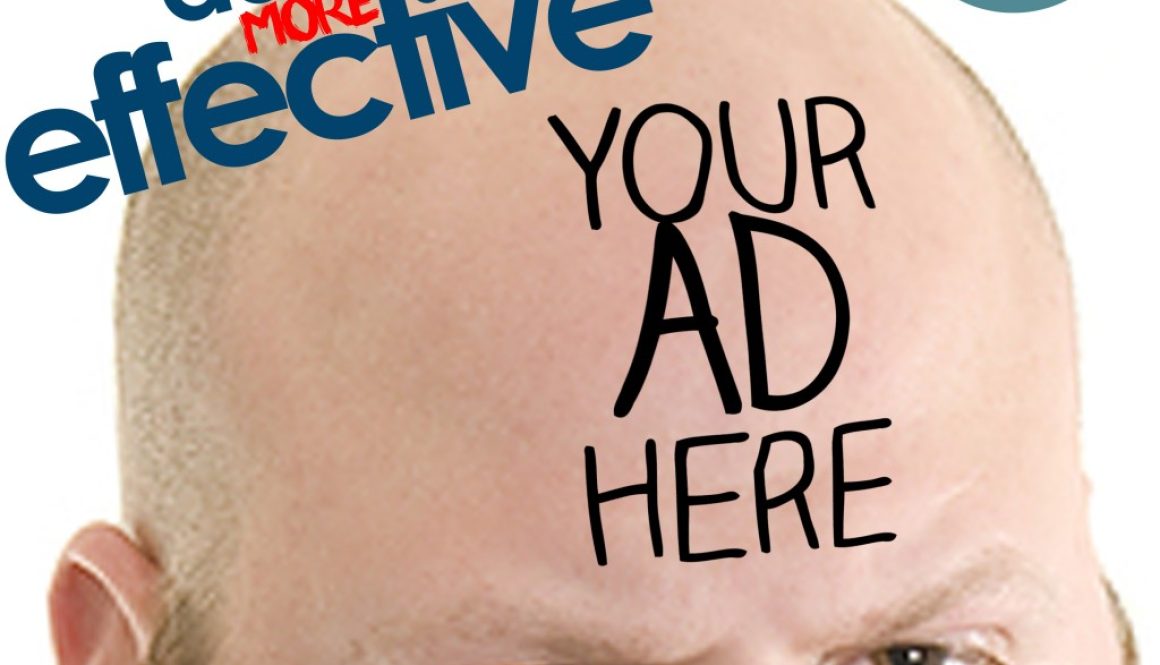Advertising is expensive. You don’t want to
In this six part series, we’ll be talking about how to make your advertising more effective. Make sure to check out the other posts in the series to get the big picture!

Advertising is expensive. You don’t want to
In this six part series, we’ll be talking about how to make your advertising more effective. Make sure to check out the other posts in the series to get the big picture!
Very similar to last week’s article on relevance is targeting. To be honest, KNOW YOUR TARGET should be the first rule of advertising for anyone. Who are you trying to reach?
Defining your target is very important! Take some time to think of who your customer should be.
Here’s a chapter from my upcoming book – GORILLA MARKETING
We’ve been talking about gorillas. Let’s talk about rhinoceros for a moment. I’ve read that rhinos can run more than 35 miles per hour. I’ve also read that these magnificent beasts can also only see about 30 feet in front of them.
When you consider the sheer power and strength of a rhinoceros traveling at full speed, it’s no wonder that a group of rhinos is not called a “crash”.
As I speak with business owners, I’m often surprised at how many of them do not have a clue what they are shooting at! Sometimes they don’t know who their current customer base is. Sometimes, they know who they WANT to reach, but have no idea how to reach them!
They’re running like a rhinoceros – full steam ahead, running faster than their eyesight will allow!
When businesses run full steam ahead without a clear target, and without clear vision – there’s bound to be a disaster!
I grew up shooting firearms for recreation with my father. Occasionally, you’ve got to make adjustments to rifle sight to make sure the gun is in alignment. You start by aiming at the center of the bulls-eye, and then looking to see how close to that target you hit. If a gun sight is out of alignment, you can tell how to adjust that sight to be make the shooting more accurate.
When defining your target – the first thing you need to evaluate is :
WHAT ARE YOU HITTING?
Who are your current clients/customers? How did they find you?
If you don’t know this – the first thing you need to do is to start asking questions.
Have you ever been asked for your zip code during checkout at a store? Have you ever noticed a “How did you hear about us?” question while filling out a web-form?
Before you can determine who you want to reach – you need to figure out who you are reaching. And you’ve got to have some way to measure and track this information.
1. Train your Staff people to ask every customer how they heard about your business. Start tracking (on paper) what medium referred them. In fact, make this a priority by re-vamping job descriptions to include tracking responsibilities for every staff person. Reward staff members who do it well, and reprimand staff who neglect this.
2. Start a Customer Database. Some businesses get customer information automatically, others have to be creative to find ways to collect the data.
If your organization collects contact information and data on your clients – be sure to study and weigh that information to determine more insight into your clients.
If you are not set up to gather basic demographic information – offer a gift certificate or a prize, and require their information to win.
Again – studying who your clients are will give you a good idea of who your target should be. It’s LESS expensive to try to reach the type of people that you are attracting than it is to re-tool your entire business to reach a different demographic. (You may find that you need to change your methods, or reach a different demographic, but do so after carefully weighing the costs)
Once you get a good idea of who your current client base is, and you determine whether or not you need to expand that target, then it’s time to
WRITE DOWN YOUR TARGET.
I know I emphasize writing things down a lot. There’s a reason. It has been proven that people that have written goals are 90 percent more likely to accomplish them. I suggest Printing out a target – and writing your target clients across the bulls-eye. Then hang that on the wall next to the place that you do your marketing work.
Your target might be 19-35 year old men who are interested in sporting goods.
Your target may be – low-income families and elderly people living within walking distance of your grocery store.
Write that target out – and make it a visual.
Once you know who and what your target is –
ASK QUESTIONS OF PEOPLE THAT FALL WITHIN YOUR TARGET.
Find out what values they share. Research their spending habits. What styles of music, clothing, and design seem to consistently represent them? Put together surveys, or ask them personally if the advertising campaign you have in mind would get their attention or persuade them to buy.
We live in a culture built from tribes – many sub-cultures with varied tastes and appetites and needs. You may have country music loving rural people. You might have tattooed and pierced younger adults. You might be reaching athletic teenagers. Your market could be saturated with single career moms. Your target may encompass a few varied “tribes” with a diverse set of interests and characteristics.
It’s up to you (or your marketing person) to determine what “language” you need to use to connect with the tribe or tribes in your target audience.
Need to make YOUR advertising more effective? Need some help with design, copywriting or strategy?
I can help you out! Shoot me a message, and let me know how I can help!
[contact-form-7 id=”64″ title=”Contact form 1″]


